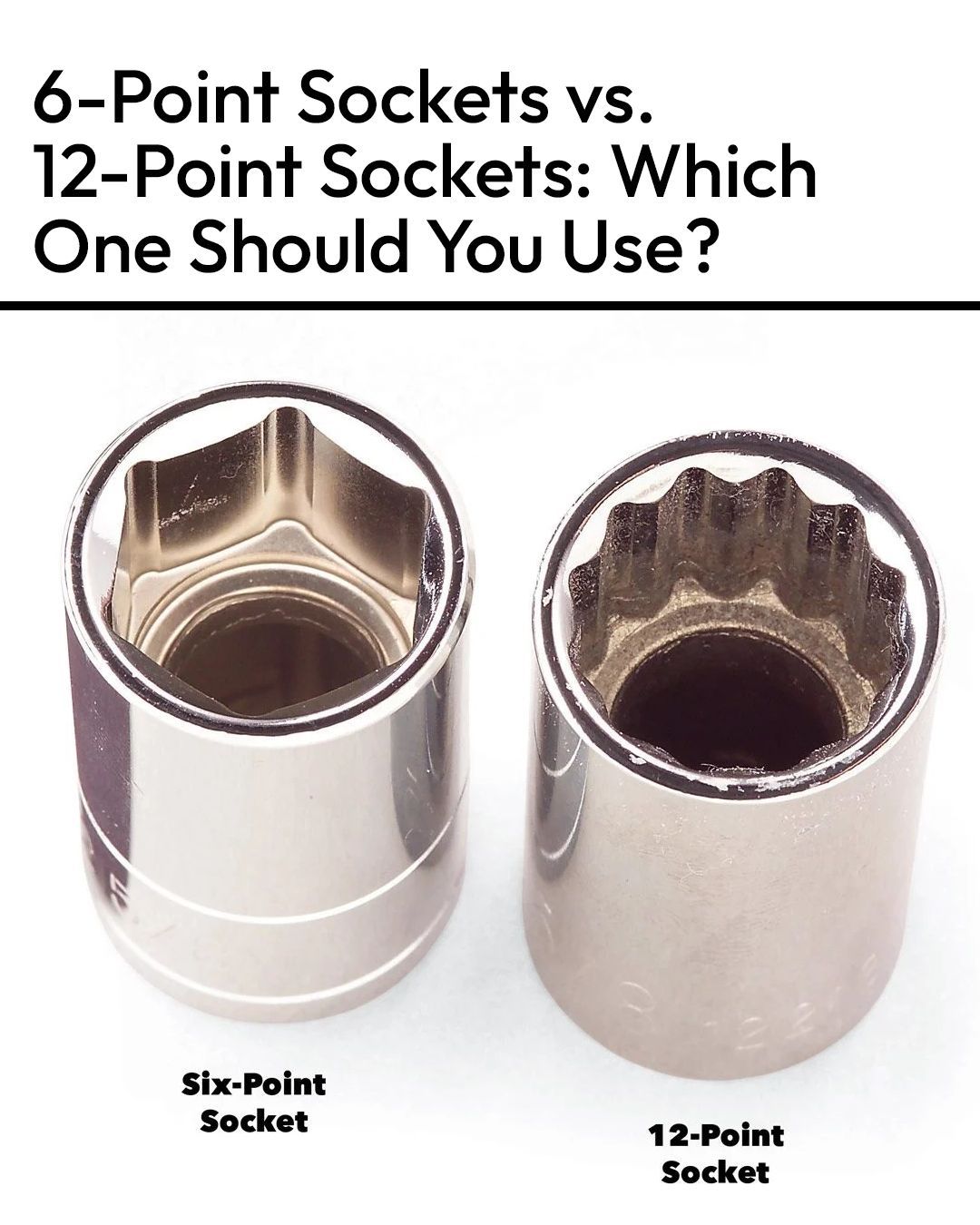ADVERTISEMENT
t Page Or Open button (>) and don’t forget to SHARE with your Facebook friends
12-Point Sockets:
- Less Durable Under Pressure: 12-point sockets can be more prone to breaking under extreme stress because of the smaller contact areas. They tend to wear out faster when used in heavy-duty applications and might damage the fastener more easily than a 6-point socket.
5. Cost and Availability
6-Point Sockets:
- Generally Less Expensive: Since 6-point sockets are more commonly used and their design is simpler, they tend to be more affordable. You can find them in most standard socket sets, and they’re widely available at most hardware stores.
12-Point Sockets:
- Slightly More Expensive: 12-point sockets are often seen as a specialized tool, which can make them a bit more expensive than 6-point sockets. However, for tasks that require them, the increased flexibility can justify the extra cost.
6. Which One Should You Choose?
Ultimately, the choice between a 6-point and a 12-point socket comes down to the type of job you’re doing:
- Choose 6-Point Sockets If:
- You’re working with high-torque applications (e.g., automotive repairs, machinery).
- You need a more secure grip on fasteners, especially those that are worn or damaged.
- You want to avoid rounding off corners or damaging the fastener.
- Choose 12-Point Sockets If:
- You’re working in tight or awkward spaces and need the flexibility to engage the fastener at multiple angles.
- You’re working with smaller, less torqued fasteners (e.g., electrical work, light construction, assembling furniture).
- You want a faster solution for basic tasks where high torque is not a concern.
Conclusion: The Right Socket for the Right Job
Both 6-point and 12-point sockets have their unique advantages, and understanding when and where to use each can improve the efficiency and success of your projects. For heavy-duty, high-torque tasks, the 6-point socket is the superior choice, offering better grip and durability. On the other hand, if you need greater flexibility for accessing fasteners in tight spots, a 12-point socket is the ideal option.
Ultimately, having both types in your toolkit will allow you to tackle a variety of tasks with ease. Whether you’re a seasoned mechanic or a DIY enthusiast, understanding the differences between these two types of sockets will ensure that you always have the right tool for the job.
